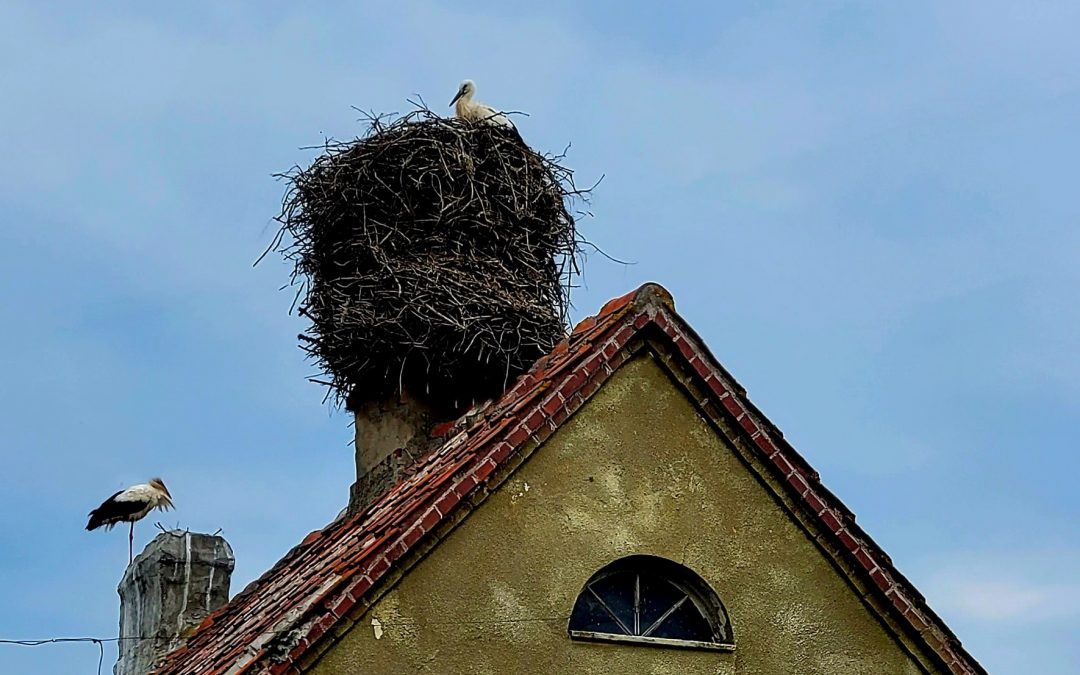A huge stork nest – which experts estimate to weigh one and a half tonnes and media have dubbed a “skyscraper” – has been spotted in Poland. The nest has been submitted to a contest for Europe’s largest stork nest and, according to the structure’s discoverers, has a chance of winning.
“It looks like two nests stacked on top of each other,” wrote the creators of the “Crazy Nauka” (Crazy Science) education blog on social media. “Storks often superstructure their nests on top of the existing ones. Record-breaking nests were nearly 4 metres high! Such nests weigh several tonnes.”
View this post on Instagram
The blog’s creators have sent an image of the nest – which was discovered on the roof of a building in the northeastern Warmian-Masurian province – to an ornithologist friend, Adam Zbyryt, who estimated the height at 2 metres and weight at 1.5 tonnes.
Zbyryt is also one of the organisers of a competition for Europe’s largest stork nest funded by Poland’s education ministry.
“It turns out that ‘our’ nest is a strong candidate for the winner, at least at the moment,” Crazy Nauka wrote on Facebook, providing a link to a stork nest weight calculator.
The stork nest is made up of sticks and branches arranged in the form of a ring, write the creators of Bocianopedia, an online encyclopaedia about storks (bociany in Polish)
The nest can be replenished with new material almost daily throughout the breeding season. While the chicks are in the nest, the addition of new material is also important to keep it clean, and it is common for the birds to remove worn and crumbled pieces of bedding from the nest.
The nest plays an extremely important role in the life of storks. It is the place where pairs meet at the beginning of the breeding season, and where they mate and raise their young.
The same nests can be in use for many years and over many generations of storks. There are nests in Poland with a documented history of over 100 years. These include, for example, a nest on a church in Kościerzyce in the Brzeg district, the construction of which is recorded in the parish chronicle.
White storks have hatched in the wild in the UK for the first time in over 600 years following a successful reintroduction of birds from Poland, one of whom is the mother of the new chicks https://t.co/y8QWmc7WQ2
— Notes from Poland 🇵🇱 (@notesfrompoland) May 18, 2020
However, the number of storks in Poland has been decreasing in recent decades, as land acquisition for agriculture deprives the birds of foraging space.
Poland used to have Europe’s largest stork population but lost that title to Spain in 2015, said state energy company Energa, Bocianopedia’s sponsor. At that time, the population of this bird, considered a symbol of Poland, was 45,000 pairs, which was 15-20% lower than a decade earlier.
“This is because even traditional meadows, traditional pastures, where there are no cows, have been turned into [use for] crops, which from the stork’s perspective is a kind of desert,” said Piotr Tryjanowski, head of the zoology department at the Poznań University of Life Sciences, told Radio Poznań in April.
One of the largest white stork colonies in Poland can be seen in the village of Żywkowo, reports agricultural news service Kalendarz Rolnikow. Only 20 people live there, but every summer around 100 storks arrive in the village, where there are more than 50 nests and nest platforms on trees, roofs and poles.
#Żywkowo. Bociania stolica Polski. Niestety bociany odleciały 4 tygodnie temu. pic.twitter.com/qpRcejv8Rn
— Hubert Gajewski (@hubertgajewski) September 16, 2016
Main photo credit: Crazy Nauka

Alicja Ptak is senior editor at Notes from Poland and a multimedia journalist. She previously worked for Reuters.



















